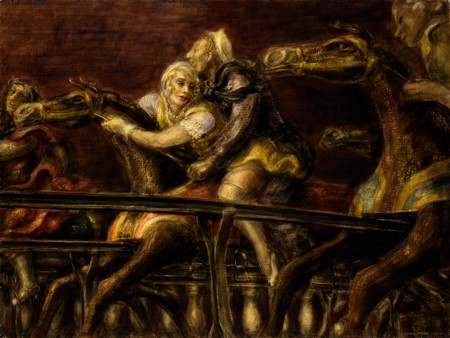Between 1934 and 1941 the Carnegie Corporation of New York developed four nation-themed traveling art exhibitions representing the United States and the British dominions of Canada, South Africa, Australia, and New Zealand. One of these, Art of Australia, 1788–1941, was among the first exhibitions to be shown at the new National Gallery of Art in Washington (October 2–26, 1941) and the first exposure of American audiences to Australian aboriginal art. Having recently completed articles on the Australian and New Zealand exhibitions of 1941, at CASVA I moved backward chronologically to research the first two: Contemporary Painting by Artists of the United States, which was sent to Canada in 1934 and then withdrawn, and the successful Exhibition of Contemporary Canadian Painting, which toured South Africa, Australia, and New Zealand in 1937–1939. My aim is to write the final article in a trilogy documenting the complete cycle of Carnegie dominions exhibitions.
For the Australian and New Zealand governments, which cosponsored the exhibitions, they were a relatively straightforward exercise in cultural diplomacy, designed to familiarize the American public with its Pacific allies at a time of dire emergency. Their wartime aims are easy to grasp, as is the Cold War rationale behind postwar exhibitions to promote American art and culture in Europe. What motivated the Carnegie Corporation to mount exchange exhibitions with the British dominions during the 1930s, however, is not so clear. The transformed global politics of the postwar world have obscured the nested national and transnational identities of the prewar dominions and their former significance to the Anglo-American alliance.
The self-governing, white, anglophone dominions held a peculiar status within the British Empire: they were seen as superior to the dependent colonies, yet as still immature in their cultural identities. Art had a key role to play in demonstrating their maturity, which the Carnegie Corporation recognized and encouraged. In the 1930s it was commonly articulated in catalogs of exhibitions such as A Century of Canadian Art (Tate Gallery, London, 1938) that the destiny of a dominion was to forge a path toward an independent national art arising from the land rather than reliant on European influences, an idea fostered by the corporation through periphery-to-periphery, interdominion exchange of these exhibitions. However, the corporation was not content to be a mere facilitator of dominions-led artistic developments.
This push for change can be seen in the corporation’s deliberate shake-up of the prevailing conservatism in dominion artistic circles. Its insistence on
My conclusion is that the exhibition was not canceled because it was of inferior quality, as the corporation claimed. Indeed, it was comparable to other respected surveys of contemporary American painting. Although abstraction and political statements were carefully weeded out, what remained was a vital and representative range of nudes, portraits, landscapes, seascapes, and depictions of the rural and urban American scene. Ironically, it was precisely this variety—deriving partly from the inherently diverse nature of American regionalism and partly from a curatorial tolerance for stylistic diversity expressive of modern European influences—that Canadian critics felt detracted from any sense of a cohesive or original national art in the United States. Although the Carnegie Corporation did not renege on its commitment to modernism, it would not risk jeopardizing the reputation of the United States abroad in this way again. Despite repeated entreaties from the dominions for the American exhibition to tour, the corporation would never revive it.
